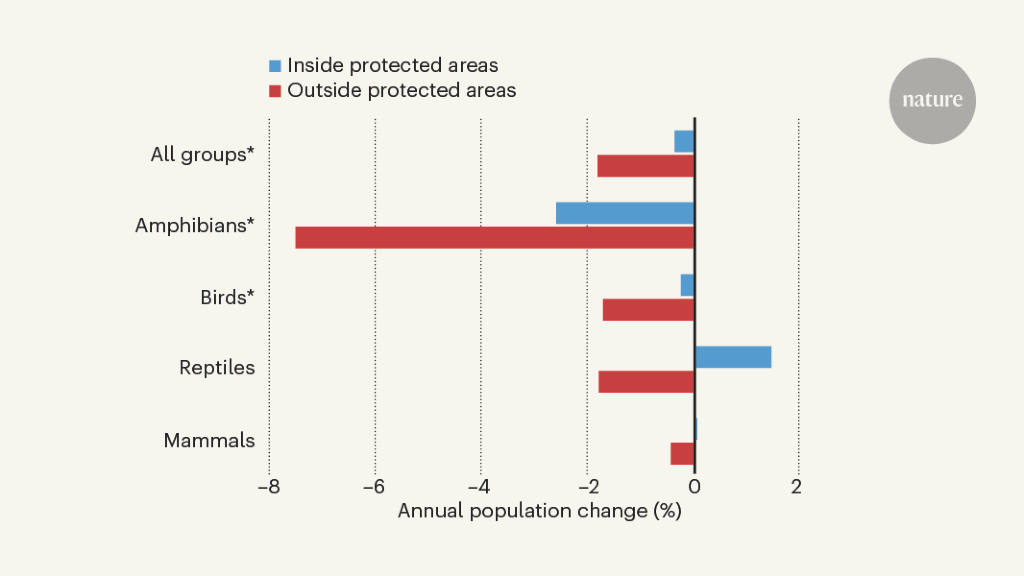After 2 months of the National Park (Service???) refusing to give me any of their Integrated Pest Management data at all, I have acquired some through an alternate route.
</span
Summary of a PUPS data entry that is quoted further below:
The Integrated Pest Management (IPM) division approved aerial spraying of 10,000 leased acres with as much as 10 tons of a product that is known to be toxic and negatively affect native bees, native butterflies and the native wetland communities at and near the site, including an endangered fish species.
<Br
The material safety data sheet (MSDS) on the approved pesticides clearly states not to get it in waterways which certainly happened. This would affect food resources, if not have direct toxicity to the fry of the endangered fish in the area. The National Park Service is killing off the very base of the food chain for baby fish, baby dragonflies and many other beneficial aquatic organisms.
I believe this is just the tip of the iceberg as to why so many of our endangered species are struggling. It is highly likely that developing young animals are much more affected by the toxins being sprayed then adults.
The best to everyone here. I love you all, and your children and grandchildren too. I believe that poorly regulated pesticide use is the most hazardous thing to their future happiness and health. Beyond even climate change and that’s saying an awful lot.
I think this is literally the third data entry I looked at under a small fragment of the PUPS database I acquired. It is on leased land just like the issue with the fire under the 10 freeway in LA
I also wonder why the integrated Pest Management (IPM) department approved a request in February 2014 based on an IPM plan from 1998?
Start PUPS database excerpt.
______________________________
U.S. Fish and Wildlife Service
Pesticide Use Proposal Date: 02/28/2014
Page: 3
XenTari 2 lbs/acre Aerial Helicopter
Size of Treatment Area: 10,000.00 acres
REI (Restricted Entry Interval): None
Applicator Information: Contractor, Cooperator
Approved IPM Plan (Y/N): Y
IPM Plan Year: 1998
Non-Chemical Controls Considered (Y/N): Y
IPM Strategy:
Refer to “Integrated Pest Management Plan for Leased Lands at Lower Klamath and Tule Lake National Wildlife
Refuges Oregon/California (1998).
Best Management Practices:
Application at wind speeds less than 10 mph (but not inversion conditions) – must follow label.
Calibrate application equipment.
Field scouting/monitoring before pesticide application.
Pesticide application buffers around sensitive areas.
Use lowest effective application rate.
Additional Best Management Practices:
Buffer Zone:
Ground Application: 150′ from Tule Lake Sumps 1A,1B and the
English Channel; 25′ from wetlands, drains and canals when surface
water is present.
Aerial Application: 300′ from Tule Lake Sumps 1A, 1B and the
English Channel; 50′ from wetlands, drains and canals when
surface water is present.
Organic Production:
Dipel DF and XenTari DF qualify as Allowed status for use in
organic cropping systems in accordance with USDA National Organic
Program regulations found in 7 CFR 205 and subsequent
amendments. Use patterns in in organic production systems may be
different than that listed on the products label. It is the sole
responsibility of the producer or their contracted commercial
pesticide applicator to use products in accordance with National
Organic Standards.
Drift Management:
Follow general requirements for ground and aerial applications,
Next Page.
U.S. Fish and Wildlife Service
Pesticide Use Proposal Date: 02/28/2014
Page: 4
applicable for all pesticides on lease lands, and follow all
label recommendations and requirements including those of any
applicable supplemental label.
Treatment Site Conditions:
Topography (Degree Slope): Flat
Soil Texture: Silty Loam, Silty Clay Loam
Soil pH: 6.6-8.4
Soil Organic Matter: 5-15
Surface Water Type(s): Drain, Canal
Distance to nearest: 26 – 50 ft
Depth to Groundwater: 2+ to 5 ft
Distance to nearest potable water: 1+ to 2 Miles
If Spot Treatment, Estimated % Cover to be Treated:
Is the Treated Area Naturally Flooded or Irrigated (Y/N): Y
If Yes, How Many Acres are Affected: .00
Irrigation Method: Flood, Sprinkler
Non-Target Species At/Near Treatment Area during or immediately after treatment (taxonomic groups):
Amphibians, Crustaceans, Fish, Fish-eating birds, Mammals, Native Lepidopterans, Native Pollinating Insects,
Passerines, Reptiles, Shorebirds, Waterfowl
Are Impacts to Non-Target Species Expected? (Y/N): N
Federally Listed Species and Critical Habitat(s):
Key:
NE = No Effect
NLAA = Not Likely to Adversely Affect
LAA = Likely to Adversely Affect
JAM = Jeopardy/Adverse Modification
NJNAM = No Jeopardy/No Adverse Modification
Note: ESA Documentation is required for NE, NLAA, LAA, JAM and NJNAM Effects Determinations. Please
ensure you are in compliance with the current Endangered Species consultation procedures.
Species Common Name/Critical Habitat Effects Optional: Provide ESA text here or attach documents
Lost River sucker NLAA Biological Opinion (81450-07-F-0056 KBNWR PUP
BO) Regarding the Effects on Listed Species from
Implementation of the Pesticide Use Program on
Federal Leased Lands, Tule Lake and Lower Klamath
______________________________
End of database excerpt.
My head exploded. Did the IPM department really give their blessings to spray 2 lbs per acre on 10,000 acres (10 tons of pesticide) in close proximity to wetlands? Whether or not this amount actually was sprayed, the IPM Department gave them permission to do so.
_Quote from Integrated Pest Management’s careful analysis and approval_
Production:
Dipel DF and XenTari DF qualify as Allowed status for use in
organic cropping systems in accordance with USDA National Organic
_end quote_
Just because something’s organic doesn’t mean it’s not toxic to our endangered species or their food sources. And for _any_ biologist to think or say that it does is just mind numbingly (I will not say incompetent.)
Also in the data above, the IPMs own “Additional Best Management Practices: Buffer Zone:” requires 50 ft but the actual site analysis says that as little as 26 ft is present to drainage canals.
_Quote from Integrated Pest Management’s careful analysis and approval_
Non-Target Species At/Near Treatment Area during or immediately after treatment (taxonomic groups):
Amphibians, Crustaceans, Fish, Fish-eating birds, Mammals, Native Lepidopterans, Native Pollinating Insects,
Passerines, Reptiles, Shorebirds, Waterfowl
Are Impacts to Non-Target Species Expected? (Y/N): N
_End of quote_
I’m stunned. Just stunned. This was only about the third review I looked at, probably 2 minutes after I actually got IPM data. I imagine that since they are spraying a chemical that kills caterpillars they _assumed_ it would not hurt the wetlands. Many many people assume things like that. But in addition; don’t our monarchs and bees (especially our native bees) have enough trouble already?
I had my fears because of my experience in native California wetland ecology, but it actually took me another entire minute to verify them by Googling the pesticides approved to be used: Dipel DF and XenTari DF.
MSDS (material data safety sheet) for Dipel DF
_Quote_
6.2. Environmental precautions
Environmental precautions Do not allow escape into sewage system or watercourses. Do not wash residues
into drains or other waterways.
6.3. Methods and material for containment and cleaning up
Containment of a spill Do not allow escape into sewage system or watercourses.
Methods for cleaning up Clean up spills immediately. Sweep up and place into sealable containers. Dig up
heavily contaminated soil and place into drums. Use a damp cloth to clean floors and
other objects, and also place in sealable container. Dispose of all waste and
contaminated clothing in the same manner as waste chemicals (i.e. via an authorized
disposal facility). Do not wash residues into drains or other waterways.
_End MSDS quote_
More from the MSDS Dipel DF.
_quote_
Toxicity – aquatic invertebrates EC50, 21 days: 14 mg/l, adult mortality/immobility, Daphnia magna
NOEC <5 mg/l (FIFRA 154-20) EC50, 21 days: 13 mg/l, adult mortality/immobility, Daphnia magna EC50, 21 days: 7.8 mg/l, reproduction, Daphnia magna
NOEC = 2.5 mg/l (OECD 211)
_End MSDS quote_
MSDS for XenTari (DF)
_Quote_
2.1 Classification of the Substance or Mixture
Eye Irritant, Category 2A
Hazardous to the Aquatic Environment, Acute Category III (Daphnia)
_End MSDS quote_
Daphnia magna are just a typical test organism. Their use in toxicity studies represents a lot of tiny aquatic invertebrates that are a prime source of food for developing fish larvae. Daphnia magna are not native and it seems to me that it would be logical in California to be using _native_ biological test organisms. But that doesn’t eliminate the fact that the IPM’s approved pesticide treatment _kills the primary aquatic test organism._ And would certainly kill native daphnids present at the site too, possibly even quicker. Oh, and by the way Daphnia _are_ crustaceans. I am familiar with Daphnia but for the rest of my audience; Wikipedia: “Daphnia is a genus of small planktonic crustaceans”. We are killing off the very base of the food chain for: baby fish, baby dragonflies, baby frogs (tadpoles) and many other beneficial aquatic organisms.
So, this incredibly careful integrated Pest Management review asked:
“Are Impacts to Non-Target Species Expected? (Y/N): N”
And found that the effect to non-target species? What was it? Amphibians, Crustaceans, Fish, Fish-eating birds was…
“N”
And to the endangered fish (the Lost River sucker) was …. NLAA (Not Likely to Adversely Affect).
That pretty much sums up the damage to our environment from 10 tons of pesticides… N and NLAA buried a mound of hidden data.
What do _you_ think a Lost River Sucker larva/baby (less than the length of your little finger) eats? I believe this is the tip of the iceberg with so many of our endangered species. I believe it is highly likely that the developing young are much more affected by the toxins we are spraying then adults. 10 tons in just this one permit.
The integrated Pest Management division of our national parks is doing sloppy, almost criminally poor approval of pesticide use in _our_ national parks.. It took me just a minute to Google MSDS information that raises serious questions regarding the appropriateness of this pesticide application. Our top environmental organizations have fallen flat on their face. It is inexcusable that they have not been paying attention for years, if not decades.
In 3 months sierra club’s national front office has not contacted me back in response to my questions to them regarding oversight of pesticide use in our national parks. Some might wonder whether they are more interested in our endangered native animals … or selling a furry owl toy from China.
I am very, very grateful for some serious help from some members of local chapters. We should not throw out the baby with the bathwater. The majority of the Sierra Clubs leaders are awesome, and incredibly talented, knowledgeable, and dedicated. However; Sierra Club members need to seriously review the dedication, and decision making process of their national administrators. And we shouldn’t just blame the sierra club, the audubon society and world wildlife fund are also picking gravel out of their lips, noses, and eyebrows.
The best to everyone here. I love you all and your children and grandchildren too. I believe that poorly regulated pesticide use is the most hazardous thing to their future happiness and health.
Bob
Spread the Good News Below: Permaculture!


